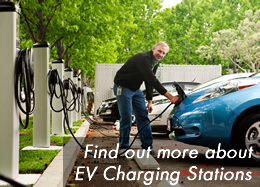Reduce Energy Use
June 24, 2009 by carbonday
Filed under At Workplace
How to Reduce Energy Use at Work
In order to make your workplace more environmentally friendly you can make suggestions about how to improve electricity conservation, water usage, and even furniture sources. The U.S. Green Building Council’s Leadership in Energy and Environmental Design (LEED) program can provide information about environmentally friendly buildings.
You can find information about your building from the owner, maintenance or operations department or from the person responsible for those issues in your company. Make clear that you’re doing research to help make the workplace a better place for all and don’t imply any criticism — these are the folks who will implement (or subvert) any green practices the building management adopts.
Actions to consider suggesting include the following:
· Switch to highly rated energy-efficient appliances. The federal government’s Energy Star program rates appliances.
· Schedule regular maintenance and service for heating and air conditioning systems, and fit them with timers so that they’re in use only when people are in the office.
· Change electricity suppliers to those sourcing power from green initiatives.
· Install water-saving taps, showerheads, and low-flush or dual-flush toilets.
· Install hand dryers rather then a paper towel dispenser. While it uses more electricity it cuts down on the numbers of trees needed to supply the paper.
· Take advantage of natural lighting, and install task lighting and high-efficiency compact fluorescent lighting.
· Install blinds and shutters on windows to block out direct sun and reduce the need for air conditioning in the summer and to let sun and light in during winter. Blinds and shutters can reduce energy costs because less electricity or other fuels are used to cool the premises in summer and to heat the premises in winter.
· Make sure that all equipment is turned off at the end of the day rather than left on standby.
· Arrange for the last person out of the office each day to turn out the lights, or have an electrician put the lights on a motion-sensor timer that switches them off when there has been no movement in a room for a certain amount of time.
· Equip the office kitchen with a fridge, a kettle, and perhaps a toaster oven or microwave so that people can easily reheat food that they bring from home. The availability of these appliances reduces the need to drive somewhere off-site for meals which in turn reduces our carbon footprint and helps employees maintain a healthy diet if workplaces aren’t close to restaurants that offer healthy alternatives.
· Give everyone their own mug (or ask them to bring in their own), and remind them to save electricity by not boiling more water in the kettle than they need each time for hot beverages. There are now one cup coffee and vending machines that will keep the costs down as well as conserve the water usage. Ask your purchasing person to ask the vendor.
· In the winter, turn the thermostat down slightly, and ask people to wear sweaters or jackets. In the summer, set the air conditioning temperature slightly higher, use fans, and ask people to dress accordingly. Somebody is always too cold or too hot so by doing this they will know to bring the proper attire to work.
· Use the recycling facilities available, including the usual glass, newspaper, cardboard, plastic, and paper options, plus any others, and ask if grants or other incentives are available for taking energy efficiency measures.









